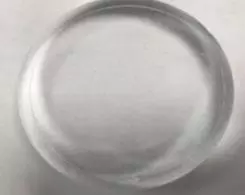Surface Finishing Quartz
Quartz is a widely used material in many industrial and scientific applications due to its unique physical and chemical properties. Achieving a high-quality surface finish on quartz components is essential for ensuring their functionality, reliability, and performance in various industrial and scientific applications. Lapping and polishing are the best surface finishing techniques for achieving the desired surface finish on quartz. These techniques offer high precision, efficiency, versatility, and repeatability, making them the preferred choice for surface finishing quartz components.
Why is Surface Finishing Important for Quartz?
Surface finishing refers to the process of refining the surface of a material to improve its appearance, functionality, and durability. In the case of quartz, surface finishing plays a crucial role in achieving precise dimensions, high-quality surface roughness, and optimal optical performance. A well-finished quartz surface enhances the transmission of light, improves the accuracy of measurements, and reduces the risk of damage and wear.
The surface finish of quartz components directly affects their functionality and performance. For example, in the semiconductor industry, quartz wafer components require a smooth, defect-free surface to enable precise patterning and alignment. Similarly, in optical applications, such as lenses, mirrors, and prisms, the surface finish determines the clarity, reflectivity, and dispersion of light. Therefore, achieving the desired surface finish is essential for ensuring the reliable and efficient operation of quartz components in various applications.
Why Lapping and Polishing are the Best Choice for Surface Finishing Quartz?
Lapping and polishing are two surface finishing techniques commonly used to achieve high-quality surface finishes on quartz components. These techniques involve the use of abrasive materials, such as diamond, alumina, or silica, to remove material from the surface of the quartz and produce a smooth, flat, and uniform surface.
Lapping involves the use of a rotating lap plate coated with an abrasive slurry to grind and flatten the surface of the quartz component. Lapping is ideal for achieving precise thickness, flatness, and parallelism on large and thin quartz wafers used in the semiconductor industry. Polishing, on the other hand, uses a rotating polishing pad coated with a fine abrasive slurry to remove the micro-scale surface roughness and produce a mirror-like finish. Polishing is suitable for achieving high-quality optical surfaces on quartz components used in the optics industry.
Both lapping and polishing techniques offer several advantages for surface finishing quartz. These include:
High Precision: Lapping and polishing offer a high degree of precision and control over the surface finish, enabling tight tolerances and smooth surface finishes. Efficiency: Lapping and polishing are fast and efficient surface finishing techniques, reducing the time and cost of production. Versatility: Lapping and polishing can be used on a wide range of quartz components, including wafers, lenses, mirrors, and prisms. Repeatability: Lapping and polishing offer excellent repeatability and consistency in the surface finish, ensuring the quality and reliability of quartz components.
Test Requirements: Quartz to be lapped and polished to achieve a flatness greater than 1 um and an Ra value better than 1nm
The lapping and polishing were performed in two stages using different machines, plates/cloths, abrasive types/grades, and additional pressure. The following are the machine and material details used in the two stages:
Stage 1 (Lap)
- Kemet 15” lapping/polishing machine
- Lap Plate: Cast Iron
- Abrasive Type/Grade: Kemox 0-800S
Stage 2 (Polish)
- Kemet 15” lapping/polishing machine
- PSU-M polishing pad
- Abrasive Type/Grade: Kemox WC-970BB
At first, the Quartz sections underwent cutting on a Micracut 201 precision saw with a diamond cut-off wheel and a slow feed rate. As a result, a tidy cut with minimal chipping was achieved.
Process breakdown for stainless steel rotor parts
Stage 1: In this stage, the cast iron lap plate and Kemox 0-800S abrasive were used to lap the Quartz samples. The lap plate was attached to the Kemet 15” diamond lapping/polishing machine, and the Quartz samples were held on the weights using Dycem, a non-slip rubber. The samples were lapped for 20 minutes with an additional pressure of 4Kg.
Stage 2: In this stage, the PSU-M polishing pad and Kemox WC-970BB abrasive were used to polish the Quartz samples. The polishing pad was attached to the Kemet 15” KemCol machine, and the Quartz samples were again held on the weights using Dycem. The samples were polished for 30 minutes with an additional pressure of 4Kg.
After cutting Quartz with Micracut

After stage 1 (matt lapped)

Lapped and Polished Quartz

